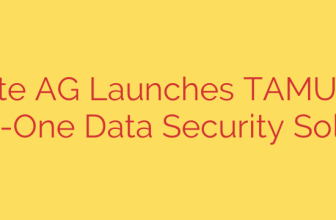
Mastering IT Monitoring with Nagios: A Comprehensive Guide
In today’s complex IT environments, maintaining system uptime and performance is not just an operational goal—it’s a critical business requirement. Proactive monitoring is the bedrock of a stable and reliable infrastructure, allowing teams to detect and resolve issues before they impact end-users. This is where Nagios, a powerful and time-tested open-source monitoring solution, comes into play.
For decades, system administrators and DevOps engineers have relied on Nagios to keep a watchful eye on everything from servers and network devices to applications and services. Its flexibility and robust capabilities make it an indispensable tool for ensuring operational health.
What Exactly is Nagios?
Nagios is an open-source software platform designed for comprehensive IT infrastructure monitoring. At its core, it provides a centralized framework to monitor hosts (physical servers, VMs, containers) and the services running on them (HTTP, SMTP, SSH, custom applications).
Its primary mission is simple yet powerful: to monitor your entire IT landscape, detect problems as they occur, and alert technical staff immediately. This shift from a reactive to a proactive problem-resolution model is crucial for minimizing downtime, preventing revenue loss, and maintaining business continuity.
How Does Nagios Work? The Core Components
The power of Nagios lies in its modular and extensible architecture. It is not a single, monolithic application but a system of interacting components that work together to provide complete monitoring coverage.
- The Nagios Core Engine: This is the heart of the system. The Core engine is responsible for scheduling and executing checks on the hosts and services you define. It processes the results of these checks and triggers alerts or other actions based on the outcome.
- Plugins: The real flexibility of Nagios comes from its plugins. Plugins are standalone scripts or executables that perform the actual monitoring tasks. There are thousands of community-developed plugins available for monitoring virtually anything—from server CPU load and disk space to database query results and network latency. If a plugin doesn’t exist for your specific need, you can easily write your own in any programming language.
- The Web Interface: This provides a centralized dashboard for viewing the status of your entire monitored infrastructure. From the web UI, you can see current statuses, acknowledge problems, view historical reports, and manage downtime schedules. It offers a clear, at-a-glance overview of your system’s health.
Key Features and Benefits of Using Nagios
Adopting Nagios offers a wide range of advantages that directly contribute to a more stable and efficient IT operation.
- Comprehensive Monitoring: Nagios gives you a complete overview of your IT infrastructure. You can monitor network protocols (SMTP, POP3, HTTP, PING), system resources (CPU load, memory usage, disk space), and application-level performance metrics.
- Proactive Alerting System: This is perhaps its most critical feature. Nagios can send notifications via email, SMS, or custom scripts whenever a problem is detected. It supports escalation chains, ensuring that if the primary contact doesn’t respond, the alert is automatically sent to the next person in line until the issue is acknowledged.
- Extensibility and Customization: Thanks to its plugin-based architecture, Nagios is limitlessly extensible. The massive community has created a vast library of plugins, and its powerful API allows for deep integration with other systems, such as helpdesk ticketing platforms and configuration management tools.
- Powerful Reporting and Data Visualization: Nagios stores historical performance data, allowing you to generate reports on uptime, alert history, and performance trends. This data is invaluable for capacity planning and identifying recurring issues that may indicate a deeper underlying problem.
Nagios Core vs. Nagios XI: Which is Right for You?
When exploring Nagios, you will encounter two main versions: Nagios Core and Nagios XI.
- Nagios Core is the free, open-source engine that provides the fundamental monitoring and alerting capabilities. It is incredibly powerful and flexible but requires more manual configuration and technical expertise to set up and manage. It’s the perfect choice for teams who want complete control and are comfortable working with configuration files.
- Nagios XI is the commercial, enterprise-grade version built on top of Nagios Core. It includes a modern web interface, advanced dashboards, configuration wizards, and official technical support. Nagios XI is designed for organizations that need a powerful monitoring solution with a faster deployment time and a lower barrier to entry.
Actionable Security Tips for Your Nagios Implementation
Because a monitoring tool needs privileged access to your systems, securing your Nagios instance is paramount. An unsecured monitoring server can become a prime target for attackers.
- Secure the Web Interface: Always use HTTPS to encrypt traffic to the Nagios UI. Enforce strong, unique passwords for all user accounts and implement role-based access control to limit what each user can see and do.
- Restrict Network Access: Use a firewall to restrict access to the Nagios server. Only allow connections from trusted IP addresses, especially for remote monitoring agents like NRPE (Nagios Remote Plugin Executor).
- Keep Software Updated: Regularly update Nagios Core, its plugins, and the underlying operating system. Security vulnerabilities are frequently discovered and patched, and staying current is your best defense.
- Harden the Server: Follow standard server hardening practices. Disable unnecessary services, use a non-root user for the Nagios process, and configure file permissions to be as restrictive as possible.
In conclusion, Nagios remains a dominant force in the world of IT monitoring for good reason. Whether you choose the customizable power of Nagios Core or the user-friendly features of Nagios XI, you are implementing a robust solution that provides the visibility and control needed to manage a modern IT infrastructure effectively.
Source: https://www.helpnetsecurity.com/2025/10/10/nagios-open-source-monitoring-solution/








